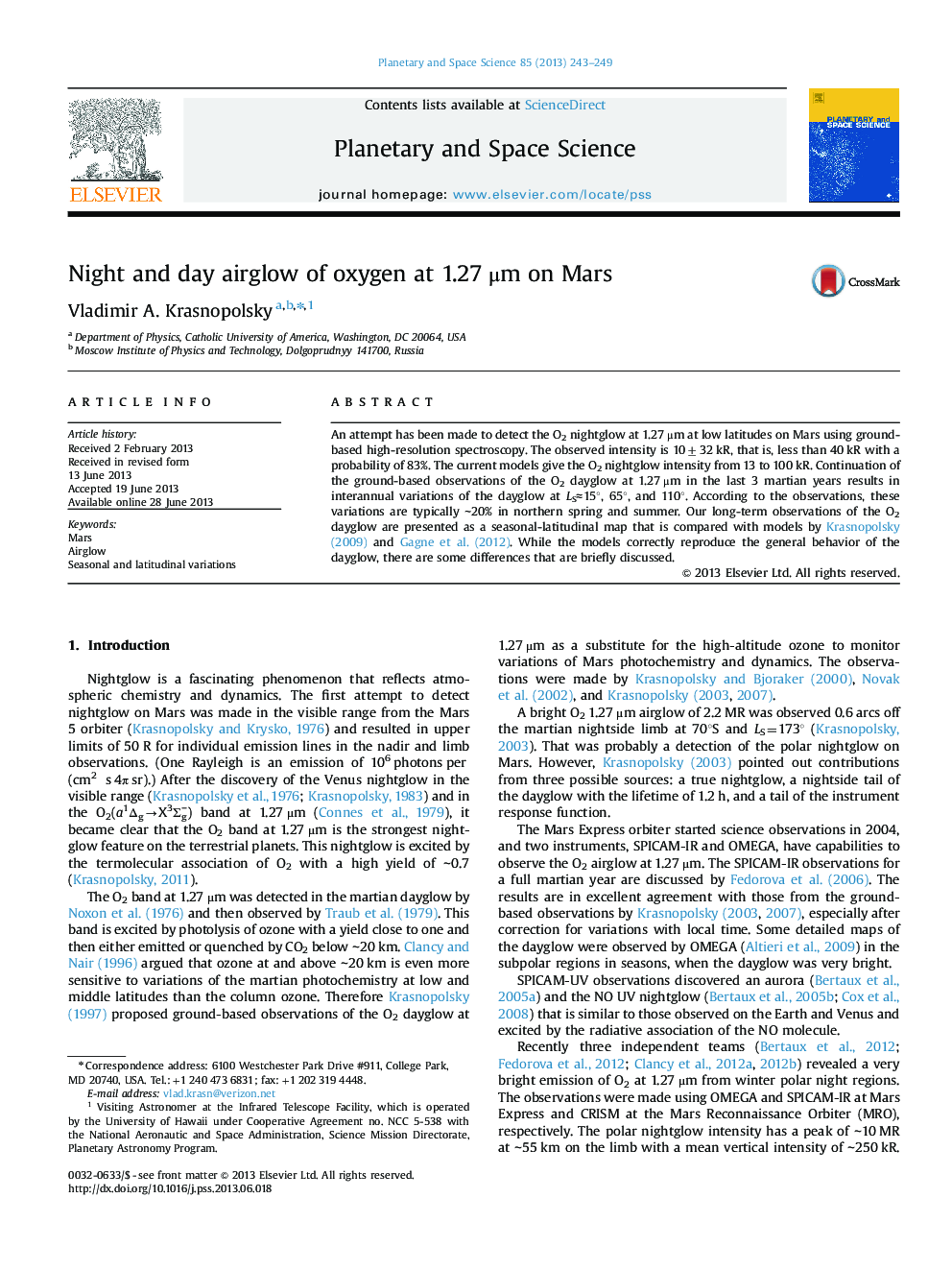| Article ID | Journal | Published Year | Pages | File Type |
|---|---|---|---|---|
| 8144014 | Planetary and Space Science | 2013 | 7 Pages |
Abstract
An attempt has been made to detect the O2 nightglow at 1.27 μm at low latitudes on Mars using ground-based high-resolution spectroscopy. The observed intensity is 10±32 kR, that is, less than 40 kR with a probability of 83%. The current models give the O2 nightglow intensity from 13 to 100 kR. Continuation of the ground-based observations of the O2 dayglow at 1.27 μm in the last 3 martian years results in interannual variations of the dayglow at LSâ15°, 65°, and 110°. According to the observations, these variations are typically â¼20% in northern spring and summer. Our long-term observations of the O2 dayglow are presented as a seasonal-latitudinal map that is compared with models by Krasnopolsky (2009) and Gagne et al. (2012). While the models correctly reproduce the general behavior of the dayglow, there are some differences that are briefly discussed.
Related Topics
Physical Sciences and Engineering
Earth and Planetary Sciences
Geophysics
Authors
Vladimir A. Krasnopolsky,
